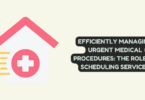
Marketing Agency
Marketing is a constantly changing and evolving field, but that doesn’t mean you have to be a marketing genius to stay on top of the trends. Here are some tips for how to keep up with all the latest marketing strategies:
Stay current with the latest marketing trends
As a marketing agency, you need to stay current with the latest trends in your industry. By staying up-to-date on what’s happening in marketing, you can use these new tactics in your own campaigns and make them more effective.
This is especially true when it comes to social media marketing and SEO (search engine optimization). If you don’t know what terms people are using on Twitter or Google searches for your product or service, then how could anyone else find out about those services?
Don’t be afraid to change your strategies
Sometimes the best way to improve your marketing agency is by trying something new. If you’ve been doing the same thing for years, and it’s not working, it may be time to change things up.
Don’t be afraid to experiment with different strategies and tactics and see what works best for your business. If someone recommends a strategy that seems like it could help your business, give it a try!
If one method isn’t working out for you, don’t give up on marketing altogether–it’s just about finding what works best for your industry and brand identity (and maybe even changing some things about yourself).
Don’t overcomplicate your messaging
You want to be clear and concise. Don’t try to say too much. Keep it simple, or you’ll lose your audience’s attention in no time flat.
Avoid jargon–the words that only people who work in the industry understand–and use plain language instead of industry terms when possible (e.g., “website” instead of “web presence”). Also, avoid long sentences and paragraphs; they’re hard for readers to follow easily, which makes them less likely to read all the way through your message! Instead, break up long pieces into bullet points or short paragraphs with subheadings so that each section has its own focus point that can be easily absorbed by readers who may have skimmed over some parts while focusing on others (which happens a lot).
Experiment, but don’t overspend on experimentation
The best way to know if a campaign will work is by testing it. However, you don’t want to invest in something that doesn’t work; you only have so many resources and time. To avoid wasting these valuable resources on ineffective campaigns, use smaller budgets first (like $100-$500) and measure your results before committing more money or time. Once you’ve determined that a campaign has potential, increase its budget accordingly–but only if necessary! It’s better to spend less on fewer campaigns than more on many different ones at once because this allows for more data points about what works best for your audience.
If there are multiple variables involved in your strategy (such as audience targeting or copy), try changing one thing at a time so that if something fails it’s easier for you to figure out why exactly things didn’t work out according to plan rather than having multiple things go wrong simultaneously which makes isolating issues difficult without proper analysis tools.
Another thing to keep in mind is that just because a campaign doesn’t work right away, it doesn’t mean it won’t work at all. Oftentimes, it will take several tries before you find something that works well for your audience. Keep track of what happens with each ad group or campaign so that you can see what changes lead to better results and which ones don’t.
Focus on lead generation, not just top of funnel activity
Lead generation is the lifeblood of any marketing agency, but it’s also one of the most misunderstood concepts in the industry.
Lead generation isn’t just about getting people to sign up for your email list or download a piece of content–it’s about understanding what those individuals want and then delivering on that promise. That’s why we recommend focusing on lead generation as part of a broader strategy that includes lead nurturing (or “top-of-funnel” activity), which involves communicating with prospects over time while they’re still in their research phase; converting those leads into clients (or “middle-of-funnel” activity); and finally retaining those clients, so you can continue working with them again in the future (or “bottom-of-funnel” activity).
To help with this process, make sure you’re using marketing automation software to manage your leads’ information throughout all three stages: capture data about new prospects; track their progress through each stage; and finally close deals when they’re ready!
Use the latest technology
We’re not talking about new toys here. We’re talking about software, technology and tools that will help your marketing agency improve its efficiency and effectiveness.
One of the best things you can do is use marketing automation software to make your life easier by automating many of the tasks that are currently done manually. This includes things like lead generation, email campaigns, social media management and more.
You’ll also want to make sure there’s an appropriate CRM (customer relationship management) tool in place, so everyone in your company knows what’s going on with each client at any given time–and how they can help them achieve their goals faster than ever before!
Marketing is always changing and it is important to stay up-to-date
As a marketing agency, you need to stay on top of changes in the industry. It’s easy to get caught up in what’s happening right now and miss out on opportunities that are just around the corner.
- Analytics: Use analytics tools like Google Analytics or Mixpanel to track how your website is performing. This can help you identify areas where users struggle with conversion and provide insight into what they’re looking for when they visit your site or app. You can use this information not only for improving user experience, but also for creating targeted ads based on user behavior–a great way to attract new customers!
- Testing: Test different versions of ads or landing pages by sending traffic from Facebook ads directly onto different pages so that one page isn’t getting all the attention (and clicks). This will allow you to test which version works best without having one page dominating over another due solely because more people have seen it before because it was featured first during the testing phase.”
Conclusion
Marketing is always changing and it’s important to stay up-to-date with that change by using analytics, testing, and listening to your customers. If you don’t feel like you have the time or resources to do all this on your own, consider hiring a marketing agency that can help support your efforts in these areas.






